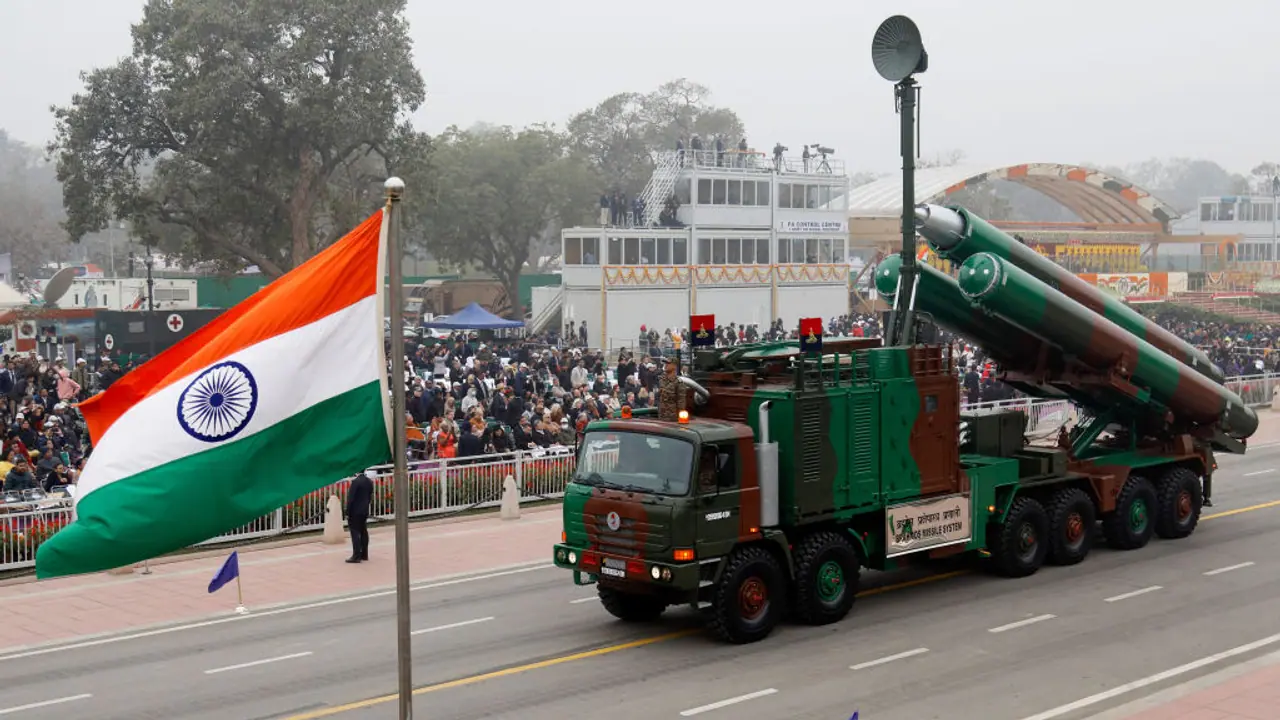Amid rising tensions with Pakistan after the Pahalgam attack, sources confirmed Tuesday that the BrahMos missile successfully demonstrated an 800 km range in recent Bay of Bengal tests.
New Delhi: Amid heightened tensions with Pakistan following the deadly Pahalgam terror attack, sources on Tuesday confirmed that the BrahMos supersonic cruise missile recently showcased an impressive 800 km range during successful tests in the Bay of Bengal. With its extended range, the BrahMos now allows India to target any location within Pakistan, significantly enhancing New Delhi’s strategic leverage and altering the regional power dynamics in its favour.

The test, which took place before the April 22 attack that claimed 26 lives, is being seen as a clear demonstration of India’s intent to bolster its deterrence capabilities and respond decisively to cross-border threats.
Sources said another test is planned soon to further refine the missile’s stealth and precision strike capabilities, reinforcing India's commitment to maintaining military superiority amid escalating hostilities.
Co-developed by India and Russia, the BrahMos is widely regarded as one of the world’s fastest and most accurate cruise missiles.
Mach 3 Speeds Leave Enemy Defence Systems Outpaced
Travelling at speeds between Mach 2.8 and Mach 3.0 — nearly three times faster than traditional subsonic cruise missiles — it provides minimal reaction time for enemy defence systems.
This exceptional speed, combined with pinpoint accuracy, enables the missile to effectively neutralise high-value military and strategic targets deep within adversary territory.
This recent test highlights India's rapidly growing missile capabilities.

BrahMos Evolution Post-MTCR Entry
Initially restricted to a 290-kilometre range due to the Missile Technology Control Regime (MTCR), the BrahMos missile has evolved significantly following India's entry into the MTCR.
The confirmed 800-kilometre range now firmly establishes India's technological maturity, sending a clear strategic message to adversaries, particularly Pakistan.
The missile's extended reach provides significant military advantages, enabling precise targeting of Pakistani military command centres, air bases, missile installations, and critical infrastructure, all while remaining outside the effective engagement envelope of most Pakistani air defence systems.
Defence Analysts: BrahMos Nearly Impossible to Intercept
Defence analysts note that BrahMos’s combination of supersonic speed, pinpoint precision, and ongoing improvements in stealth and manoeuvrability makes it increasingly difficult for adversaries to intercept, further enhancing India's credible deterrence posture.
India continues to aggressively advance its missile technology through the ongoing development of the BrahMos-II, a hypersonic variant designed to achieve unprecedented speeds of Mach 6 — 7.
Future tests are expected to refine the missile's stealth capabilities and targeting accuracy further, reinforcing India’s commitment to maintaining strategic superiority in the region.
Symbolically, the BrahMos missile represents India's measured strength and strategic autonomy.
A Fusion of Heritage and Military Strength
Inspired by the "Brahmastra," the legendary divine weapon from Indian epics known for controlled and decisive power, BrahMos reflects India's blend of cultural heritage with contemporary military prowess.
As the missile achieves greater operational ranges and technological sophistication, it underscores India's military capability and geopolitical stature on the global stage.
With this latest advancement, India's strategic missile capability has clearly entered a new era —firmly placing adversarial territories within its operational reach, and sending a potent strategic signal that no target in Pakistan remains beyond India's striking capability.
With every target within reach, further provocations by Pakistan are expected to invite swift and decisive consequences.


